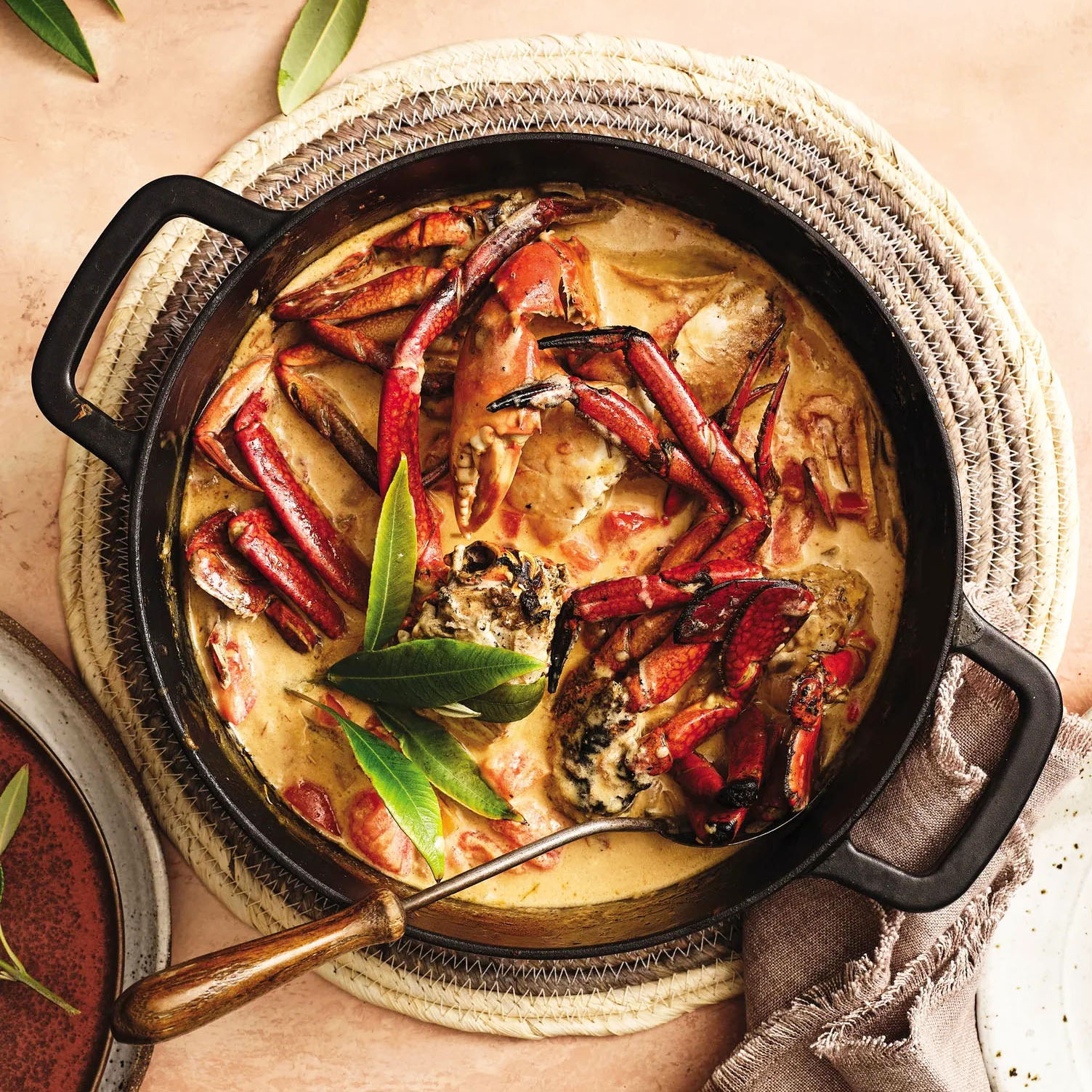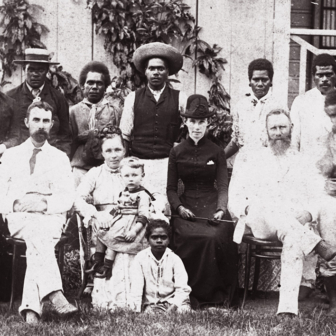What strikes me most about the Aboriginal people I know is their generosity. Australian colonial history has given them endless reasons not to be generous, but still my Aboriginal friends and colleagues invite me to talk, share a cuppa, walk Country together. I know that some, and possibly all, feel deep hurt, and well they might, but never have I known anger to come before hospitality. To be generous is admirable. To be generous after suffering more than two centuries of pervasive, brutal prejudice is astonishing. The Australian Ingredients Kitchen is a book from this well of generosity. It is not so much a cookbook as an invitation to share Aboriginal culture and knowledge.
Its co-authors are Bruno Dann, an elder from Nyul Nyul Country north of Broome in Western Australia, and Tahlia Mandie, a non-Indigenous woman with a passion for native ingredients. They see their collaboration as both prosaic and profound: a chance to champion Australian native ingredients while celebrating the possibilities of cooperation between Aboriginal and non-Aboriginal Australians.
“Collaboration is reconciliation,” Dann and Mandie argue, a salient point after the rejection of the Voice to Parliament. A modest cookbook this may seem, but at its heart is the belief that closer engagement between Aboriginal and non-Aboriginal Australians will lead to wider understanding of the beauty and achievements of Aboriginal culture. Of this the authors seem reassuringly certain. For those of us who were disappointed by the result of the referendum, and even for many of those who voted “No,” there is pleasing optimism in this hope.
The book begins with the authors sharing their stories. Dann’s story is first, as it should be, for the book depends on his understanding of Nyul Nyul Country and his willingness to share some of that knowledge. In a memorable turn of phrase, he writes of his Aboriginal elder teachers as “professors of the land,” stewards of Country. Fire was their most important tool: the Old People burned to reduce the risk of bushfires and to keep land healthy and productive for the benefit of people and animals.
In any other cookbook, a discussion about land management may seem tangential. Here, it is fundamental. Bush tucker is the fruit of land and sea Country, and it depends on care of that Country, and moderation. On Country, a person should be considered and take only what they need. The same applies in the kitchen. To cook with native ingredients, many of which are potent, is a lesson in using small amounts to achieve balance.
The book includes a well-illustrated glossary of bush foods, a vital addition given many cooks will know little about these ingredients. But while the ingredients may be unknown to many Australians, the dishes are comfortingly familiar. Most are variations on basic staples: bush basil pesto pasta, chilli con kanga tortillas with warrigal greens salsa verde, and banana bread with strawberry gum and cinnamon myrtle, to name three. By limiting what is new, the authors ensure that their recipes are an enticement to get into the kitchen rather than a quixotic tribute to bush tucker. So far I have cooked bush tucker fish tacos and a steak dish served with bush honey carrots, and next on the list is slow-cooked beef with lemon myrtle and pepperberry.
By avoiding complicated recipes, the authors ensure that their request to readers is simple: incorporate native ingredients into everyday cooking. The production of these ingredients supports Aboriginal economies, and their consumption has strong health benefits. The Kakadu plum, or gubinge as it is known to Elder Bruno and the Nyul Nyul people, is the world’s richest known source of vitamin C and a potent source of antioxidants. The Aboriginal peoples of northwest Australia have known the plant’s health and curative properties for tens of thousands of years, and for them it is both tucker and medicine.
A bonus of using native ingredients is the experience of new flavours. Lately, I have been cooking with pepperberry, also known as mountain or native pepper, which has a delicious zing and spice. It brings fresh life to mid-week family staples, reviving those rushed, school night dinners that had otherwise lost their attraction.
During the most recent school holidays, my family and I packed our swags and drove to outback South Australia and the Northern Territory. We were taken by the widespread availability of bush ingredients. In the supermarket at Uluru I saw kangaroo tails for sale: traditionally, Aboriginal people have prized the tail for its fat content, which offers calories — an important consideration in a bush diet — and makes it more forgiving to cook than other, excessively lean cuts of kangaroo.
We didn’t buy a tail, but we did buy jams and chutneys made from quandong (desert/native peach), a family favourite not readily available in our pocket of regional Victoria. So while some of the tucker mentioned in this book is more readily available in particular regions, that should not discourage interested cooks. All the ingredients can be obtained through online shops, with kangaroo fillets substituted for kangaroo tails where necessary.
The Australian Ingredients Kitchen is attractively illustrated and thoughtfully designed. Interspersed with the recipes are pages highlighting Aboriginal expertise, causes and charities. These sections celebrate the beauty and resilience of Australian Indigenous cultures and the generosity of Aboriginal peoples. To read this book as simply a collection of recipes would be to miss the point. •
The Australian Ingredients Kitchen: Simple Recipes Using Bush Foods
By Elder Bruno Dann and Tahlia Mandie | Murdoch Books | $39.99 | 208 pages




